China's SMIC To Build a GigaFab for $8.87B: An Answer to the Shortages
by Anton Shilov on September 6, 2021 1:30 PM EST- Posted in
- SMIC
- GlobalFoundries
- 28nm
- Wi-Fi
- TSMC
- Automotive
- DDIC
- China
- Shortage
- 45nm
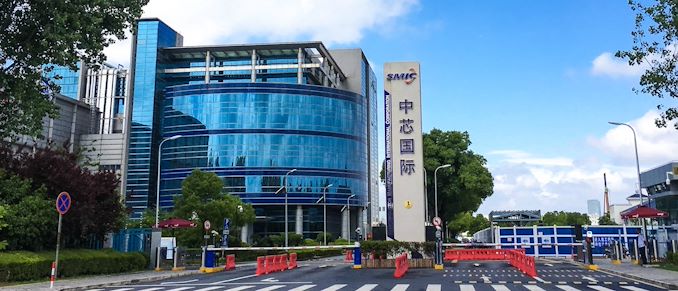
As a result of being on the US Entity list, SMIC's blacklisting has caused troubles in the company developing and deploying leading-edge fabrication technologies. As a result, it has been forced to focus on mature nodes, which still have plenty of use in long-life cycle parts for electronics and the automotive industry. On Friday the company announced plans to build China's first GigaFab, a 300 mm production facility with planned capacity of around 100,000 wafer starts per month (WSPM). The fab will cost nearly $8.87 billion.
Building Up Capacity for Mature Nodes
The new fab will be located near Shanghai, in the Lingang Free Trade Zone (FTZ), and will be built as a partnership between SMIC and the Shanghai Municipal People’s Government. The fab will process 300 mm wafers using mature production technologies, such as 28 nm and above. These nodes are typically used for various chips with a very long lifecycle, and which are in short supply now. Over the past few months various leading PC makers complained about deficit of cheap components like display driver ICs (DDICs) or Wi-Fi controllers and these chips are made using 28 nm and larger nodes. Other industries, such as the automotive industry, have been crying out for new supplies - given China's rather large car market, there is pent up demand for more sources of fundamental electronic components.
SMIC did not indicate when it expects the new fab to go online, but it is reasonable to expect it to become operational two or three years down the road. Despite this the company also did not increase its CapEx of $4.3 billion for 2021 from the number it announced earlier this year, perhaps indiciating that this will be a 2022 project when it starts. Once this happens, SMIC will be able to make a significant contribution to the global supply of semiconductors produced using mature fabrication processes.
The new fab will be China's only GigaFab for logic semiconductors (it has several for DRAM, which is considered separate). Here we are using TSMC's terminology for 'GigaFab', which is a 300mm fab with a production capacity of 100,000 or more wafer starts per month.
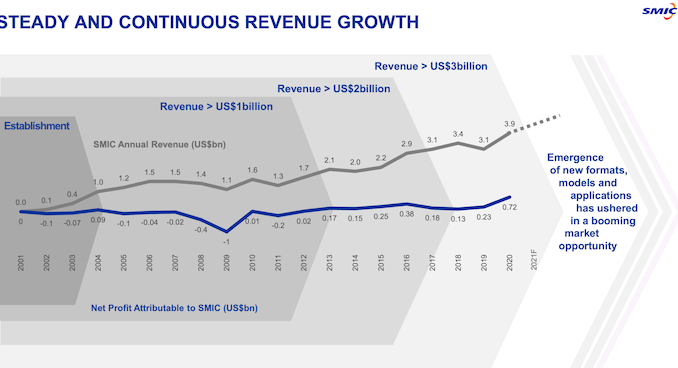
Earlier this year SMIC initiated a project to build a 300mm fab near Shenzhen for $2.35 billion. That fab is set to eventually achieve production capacity of around 40,000 wafer starts per month and use 28 and larger fabrication technologies. This smaller fab will start operations sometimes in 2022, as semiconductor capacity demand by local companies in China is growing.
In a bid to equip both fabs, SMIC inevitably has to use equipment produced by the U.S.-based makers, such as Applied Materials, Lam Research, KLA, and Axcelis. All of them applied for export licenses to supply SMIC since the foundry is in the U.S. Department of Commerce's Entity List earlier this year. While we do not know if they were granted, the very fact that SMIC announces a fab with an unprecedented capacity (for China and SMIC) indicates that it believes it can equip its production facilities with proper equipment, either from the US or elsewhere.
As always, SMIC will share ownership of the fab with authorities, in this particular case in the Lingang Free Trade Zone with co-investors. SMIC will own a controlling 51% stake, Shanghai Municipal People’s Government will own less than 25% and the outstanding 24% will be controlled by other investors set to be 'mutually found by SMIC and the local authorities.'
Just In Time
Mature process technologies, such as 40/45 nm, 55/65 nm, and 150/180 nm have been SMIC's livelihood, so expanding capacities for 300mm based processes (anything from 28nm to 45nm - larger process nodes tend to be on 200mm wafers) makes a great sense for the company. Furthermore, the company is investing additional money in 200mm fabs that use specialized nodes (90+nm) to produce chips for mixed-signal & RF, MEMS, and PMIC applications.
Based on SMIC's financial report for Q2 2021, demand for its 28 nm technology has been fluctuating in the recent quarters, whereas demand for its 14 nm FinFET technology remained at a rather low level. It's worth noting that SMIC isn't the major 28nm player in China here - TSMC and UMC lead the market. But as more applications migrate to this node, demand for chips is increasing, and SMIC's 28 nm will account for a larger portion of its revenue, which is growing despite its restrictions.
SMIC's fab utilization rate has always been rather high, but in Q2 2021 it rose to 100.4%, which essentially means that the company had to reduce its expected time on maintenance and focus more on production. This is a risky decision, so to avoid such moves in the future, SMIC needs to expand its capacities and with two all-new fabs it is doing this rather aggressively.
SMIC does have a 14nm process node with FinFETs, and is expanding this as well. In the first half of 2020 SMIC's 14nm-capable capacity was around 4,000 WSPM (based on the company's data from back then). By now, this capacity has increased to 15,000 WSPM, according to a CnTechPost story, which has not verified by the company itself.
Not Alone
SMIC is definitely not alone with its production capacity expansion plans - GlobalFoundries, TSMC, and UMC are also financing in additional capacity for mature processes. TSMC is investing in its fab near Nanjing, China. GlobalFoundries is expanding its Fab 8 in upstate New York and is installing new equipment in its Fab 1 near Dresden Germany boost its capacity.
But with such a huge demand for chips, it is inevitable that foundries will pull in some incredible amount of cash to fund their future development, which is exactly what SMIC is doing.
Related Readiing
- SMIC to Build a New 28nm Fab in Shenzhen: Production to Start in 2022
- SMIC Details Its N+1 Process Technology: 7nm Performance in China
- SMIC Begins Volume Production of 14 nm FinFET Chips: China’s First FinFET Line
- SMIC: 14nm FinFET in Risk Production; China's First FinFET Line To Contribute Revenue by Late 2019
- SMIC To Start 14nm Mass Production in H1 2019


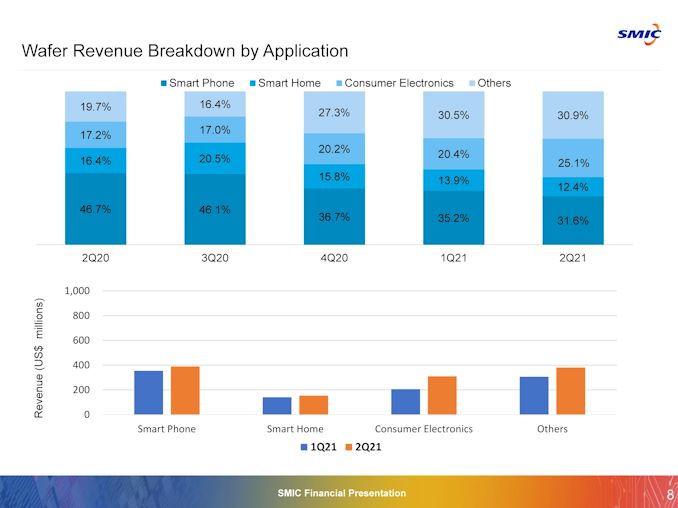
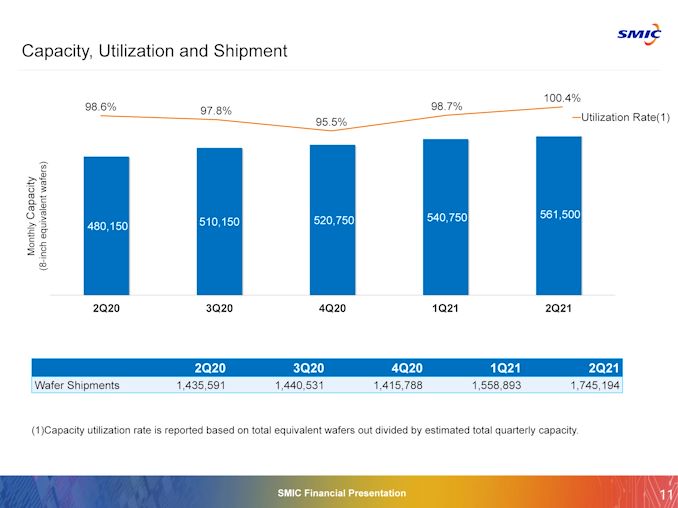
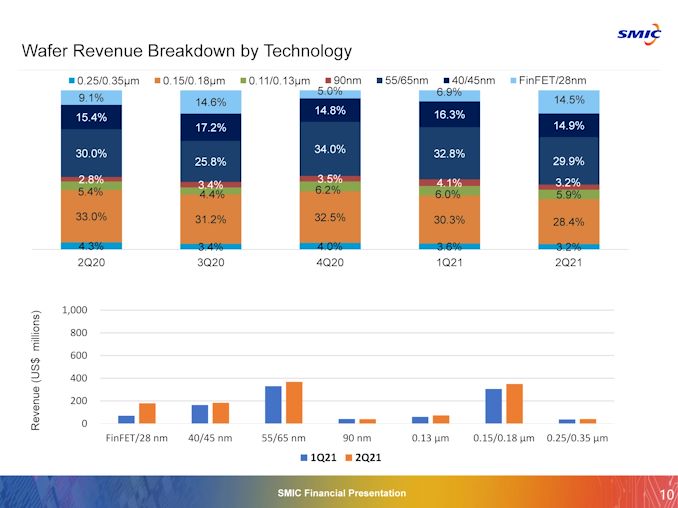








23 Comments
View All Comments
haukionkannel - Monday, September 6, 2021 - link
Hiw does this affect the raw material shortage?DigitalFreak - Monday, September 6, 2021 - link
It doesn't. This thing won't be operational until 2024 or 2025.Kamus - Monday, September 6, 2021 - link
Turns out, you can't just make state of the art fabs by throwing money at them.meacupla - Tuesday, September 7, 2021 - link
But China doesn't need state of the art fabs. They just need something that is good enough and is able to satisfy domestic demand.What's more troubling is that the western world relies too heavily on Taiwan and South Korea to produce their chips for them. Should something happen to these two small nations, the western world could be left with an even greater shortage than 2019 to present.
d0x360 - Tuesday, September 14, 2021 - link
Except TSMC is building fabs outside of Taiwan. Intel has fabs all over the world and new ones could be built to offset Taiwan.Of course there is no way Taiwan is going to fall. The USA won't let that happen and I think it's a safe bet to say tons of other countries would jump in as well. I bet India and a bunch of countries in the south china sea are just itching for a fight.
China has no combat experience either and their equipment is... Less than reliable.
Blastdoor - Sunday, September 19, 2021 - link
I think it’s the “tons of other countries” part that is key. It’s too much for US alone. But China seems to have blown their chance to emerge as a true challenger to the US. They are just too d!ck!sh.Threska - Saturday, September 25, 2021 - link
Right. Too many depend on those two to just let the Chinese walk all over them. Never mind the South China Sea in itself is important. Plus currently China has a lot of internal problems of it's own they need to deal with.lutenic - Wednesday, September 29, 2021 - link
TMIC has just now signed agreement with Indian Govt to build a new Fab here.But even that will be operational only after 2024-25 given full n support from local govt.
name99 - Tuesday, September 7, 2021 - link
Intel can't.Doesn't mean China can't. So far they've done better than many expected.
name99 - Wednesday, September 8, 2021 - link
As a followup:Without commenting on the legal issues, this is interesting, no?
http://www.icsmart.cn/47999/
The fact that this suit alleging Intel infringement of a Chinese patent as to how to build FinFETs suggests that there's some degree of true expertise in the country -- enough that they should not be under-estimated and mocked.